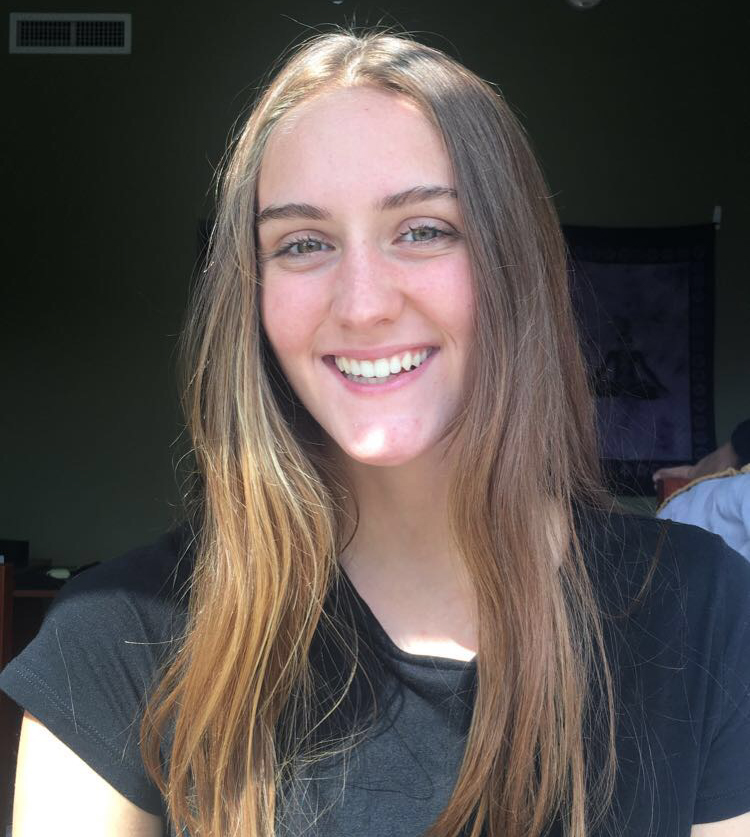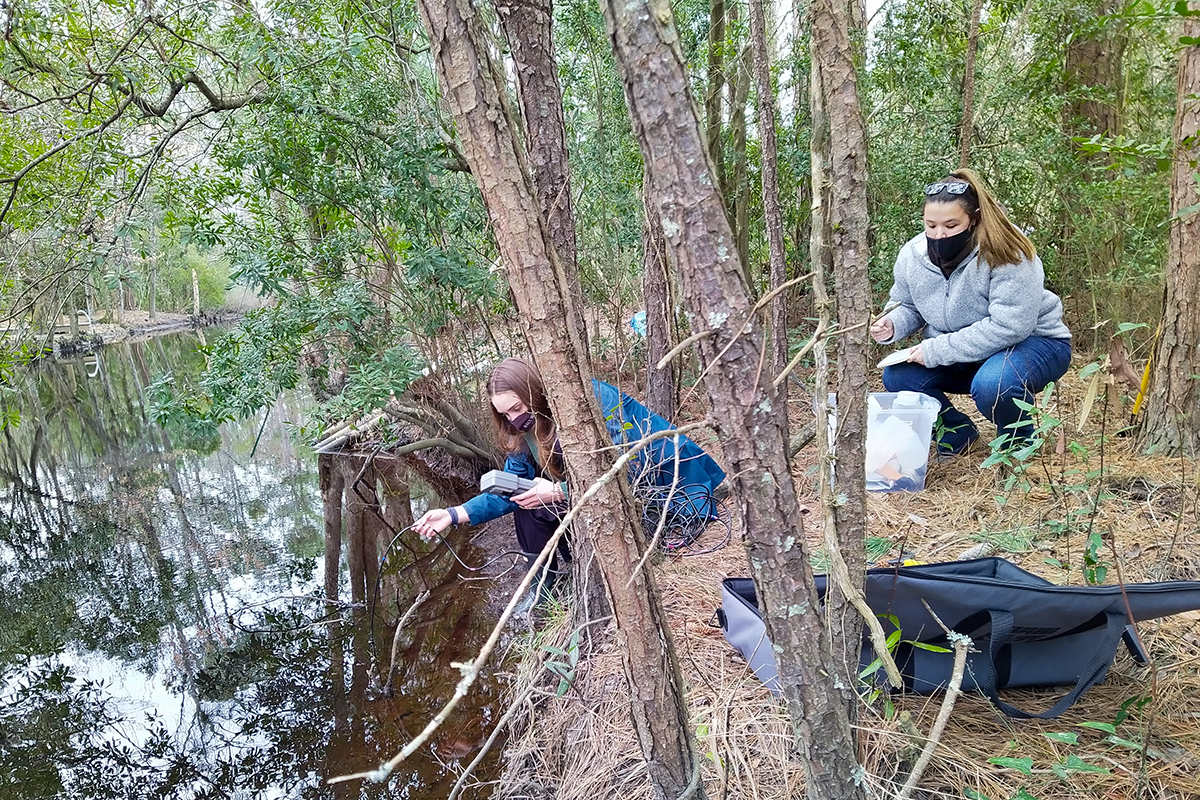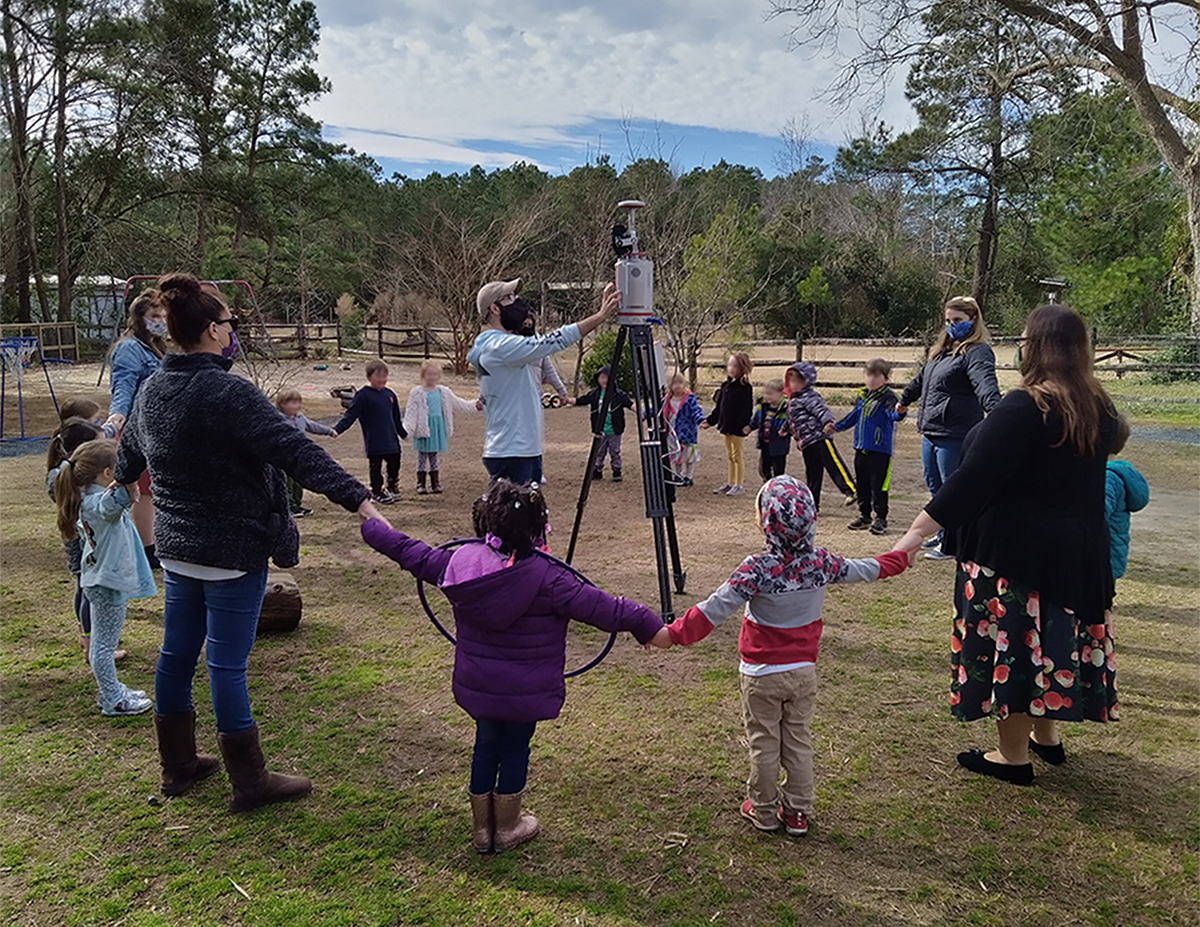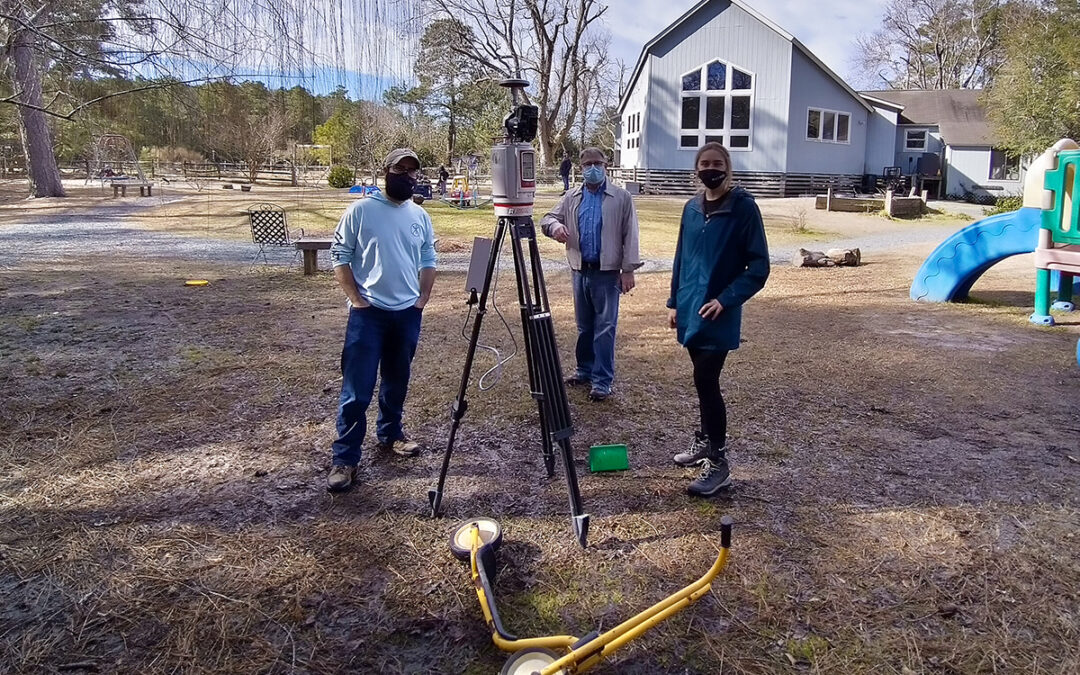For ECU students, the Semester Experience at the Coast offers many benefits each spring. During the pandemic, it has offered safe, in-person classes, and each of the courses has ample opportunities for collaborative fieldwork. In addition to the hands-on experience acquired through their coursework, many students also seek to take on semester-long internships, and Cora McQuaid, an ECU first-year, is one of them. She has already declared Bioprocessing Engineering as her major, but this semester she’s been on the hunt for as much exposure to any discipline she can get! Her internship is the perfect example of the interdisciplinary learning she hoped to find this semester on the Outer Banks Campus.

McQuaid (left or above) has taken on a watershed restoration internship under the direction of Robert McClendon (top photo, middle), who she says has gone above and beyond to give her hands-on experience. Together, along with a few others from CSI and ECU, they are working with the Unitarian Universalist Congregation of the Outer Banks (UUCOB) in Kitty Hawk, NC to evaluate sustainable development options that will minimize impacts to the creek that runs adjacent to the property and flows into Kitty Hawk Bay.
“The end result for this project will be to prepare a base map of the UU property which shows the existing conditions, topography and current opportunities and challenges as well as present a conceptual design of recommended sustainable design options.”, shares McQuaid.
But before they get to that point, there is much work to be done. During one of her visits to the property, she worked with Dr. David Lagomasino to understand the topography of the land and with Dr. Lindsay Dubbs to collect water samples.
Lagomasino and McQuaid used a terrestrial laser scanner (TLS) to capture a high-resolution terrain model of the property, and then they created a topographic map of the property. As McQuaid puts it, “The machine emits A LOT of laser pulses out to the environment and measures the distance from the device to the target. Using these measurements, the machine creates an image of the environment it has scanned. This image has different colors, and the different colors represent the intensity of the reflectance on the surface of whatever each individual beam hits.”
Scans were taken from positions all over the Kitty Hawk property to collect a multitude of data points which would then be put together to create the most accurate topographic map. The map serves as a visualization of the relationship between the built environment and the creek and will help McQuaid to evaluate the best points of access to the creek and give insight for future infrastructure on the property.

McQuaid lowers the YSI into the creek with assistance from fellow student Katrina Griffith.
During that same site visit, McQuaid and Dubbs conducted water quality testing for various parts of the creek. Using a device known as a YSI, they measured water quality parameters such as oxygen content, temperature, and salinity. They also took some samples back to the lab to incubate and, after doing so, were able to analyze the samples for E.coli, a fecal bacteria. The water quality data and bacteria-testing help McQuaid to assess the current health of the creek.

Lagomasino gathered the students in a circle to talk to them about the measurements he was making and to take a scan of the group.
While on-site in Kitty Hawk, McQuaid and her mentors had a chance for some impromptu outreach! On the UUCOB property, there is also a pre-school. The children were fascinated to watch the “strangers” go about their work and were curious to know what was happening. Once the group’s work was finished for the day, Lagomasino talked with the kids about the measurements he was making and even scanned the kids to help them understand.
So far, McQuaid is extremely satisfied with her internship experience, stating “This internship is really unique because there is so much room for me to be creative and apply everything I am learning in the field, in the lab, or through research and discussions. I get to work with a variety of people with different backgrounds and perspectives which really helps me stay on my toes and think about the possibilities, challenges, and solutions of this project from every angle. Every person that I get to work with and collaborate with is so passionate about what they do, and it truly makes this project a one-of-a-kind experience.”
Whether she’s in the classroom or out in the field, one thing is clear- McQuaid is inquisitive, eager to learn, and ready to take advantage of any opportunity that comes her way this semester on the Outer Banks.



 Based at the Coastal Studies Institute (CSI), the North Carolina Renewable Ocean Energy Program (NCROEP) advances inter-disciplinary marine energy solutions across UNC System partner colleges of engineering at NC State University, UNC Charlotte, and NC A&T University. Click on the links below for more information.
Based at the Coastal Studies Institute (CSI), the North Carolina Renewable Ocean Energy Program (NCROEP) advances inter-disciplinary marine energy solutions across UNC System partner colleges of engineering at NC State University, UNC Charlotte, and NC A&T University. Click on the links below for more information. ECU's Integrated Coastal Programs (ECU ICP) is a leader in coastal and marine research, education, and engagement. ECU ICP includes the Coastal Studies Institute, ECU's Department of Coastal Studies, and ECU Diving and Water Safety.
ECU's Integrated Coastal Programs (ECU ICP) is a leader in coastal and marine research, education, and engagement. ECU ICP includes the Coastal Studies Institute, ECU's Department of Coastal Studies, and ECU Diving and Water Safety. The ECU Outer Banks campus is home to the Coastal Studies Institute.
The ECU Outer Banks campus is home to the Coastal Studies Institute.

